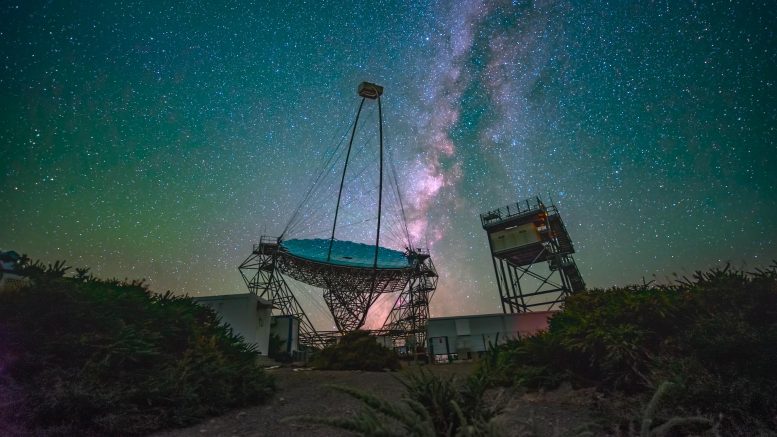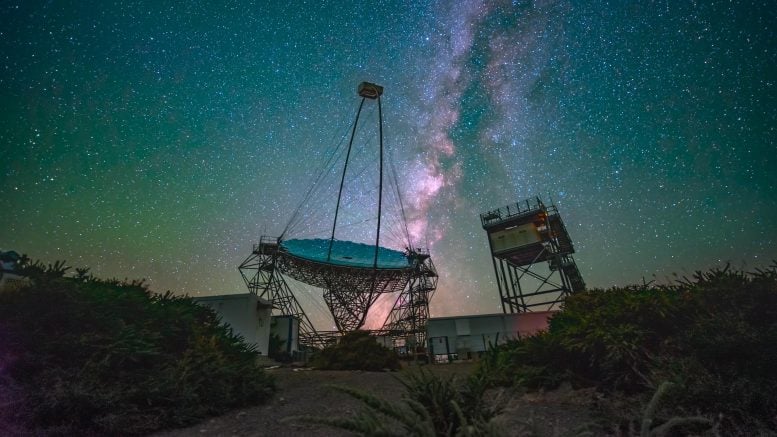

The LST Collaboration’s detection of the distant quasar OP 313 at very high energies showcases the LST-1 telescope’s capabilities. This groundbreaking observation of the most distant AGN challenges current astrophysical understanding and paves the way for further explorations of the universe. Credit: SciTechDaily.com
LST-1’s discovery of the distant quasar OP 313 at high energies marks a milestone in astronomy, highlighting the telescope’s advanced capabilities in exploring the farthest reaches of the universe.
On December 15, the Large-Sized Telescope (LST) Collaboration announced through an Astronomer’s Telegram (ATel) the detection of the source OP 313 at very high energies with the LST-1. Although OP 313 was known at lower energies, it had never been detected above 100 GeV, making this the LST-1’s first scientific discovery. With these results, OP 313 becomes the most distant Active Galactic Nuclei (AGN) ever detected by a Cherenkov telescope, further showcasing the LST prototype’s exceptional performance while it is being commissioned on the CTAO-North site on the island of La Palma, Spain.
The Nature and Observation of OP 313
OP 313 is what is known as a Flat Spectrum Radio Quasar or FSRQ, a type of AGN. These are very luminous objects found in the centers of some galaxies, where a supermassive black hole devours material from its surroundings, creating powerful accretion disks and jets of light and relativistic particles.
The LST-1 observed this source between December 10 and 14, after receiving an alert from the Fermi-LAT satellite that showed unusually high activity in the low-energy gamma-ray regime, confirmed also in the optical range with different instruments. With just four days of data, the LST Collaboration was able to detect the source above 100 Gigaelectronvolts (GeV), an energy level a billion times higher than the visible light humans can perceive.
Challenges in Detecting Distant Quasars
Only nine quasars are known at very high energies, and OP 313 is now the tenth. In general, quasars are more difficult to detect at very high energies than other types of AGN. This is not only because the brightness of their accretion disk weakens the emission of gamma rays, but because they are further away. In this case, OP 313 is located at a redshift of 0.997 or ~8 billion light years away, making it the most distant AGN and the second most distant source ever detected at very high energies.
The more distant the source, the more difficult it is to observe at very high energies due to the so-called Extragalactic Background Light or EBL. The EBL is the collective light emitted by all objects outside the Milky Way that expands across multiple wavelengths, from visible, infrared, and ultraviolet. The EBL interacts with very high-energy gamma rays, attenuating their flux and, thus, making their observation challenging. The characteristics of the LST-1, with an optimized sensitivity for the CTAO’s low energy range, between 20 and 150 GeV, where gamma rays are less affected by the EBL, enabled the LST Collaboration to extend the study of this source to tens of GeV for the first time.
The LST Collaboration will continue to observe this source with the LST-1 to expand the dataset and, thus, obtain a more precise analysis that allows scientists to improve their understanding of the EBL, study the magnetic fields within this type of source, or delve into fundamental intergalactic physics.


